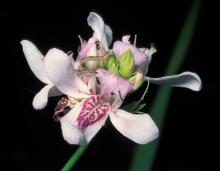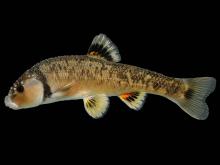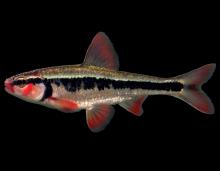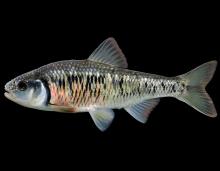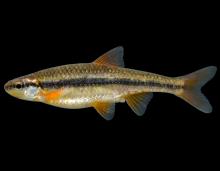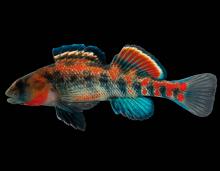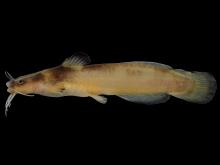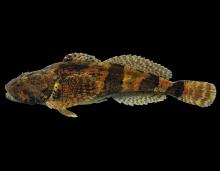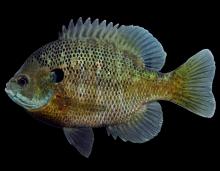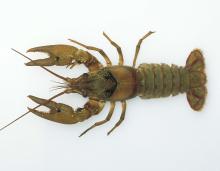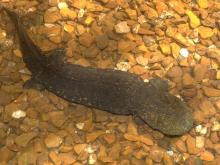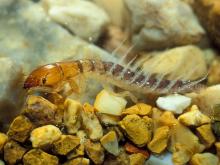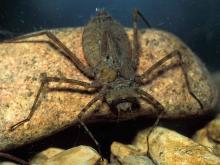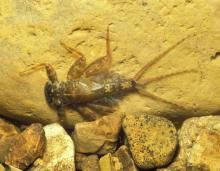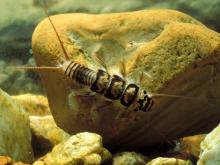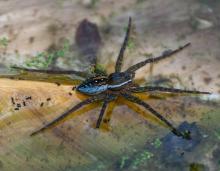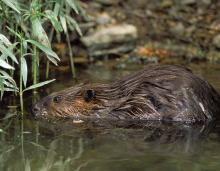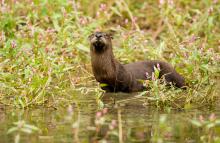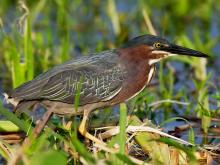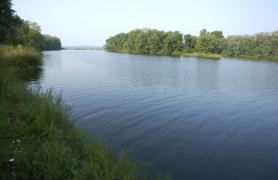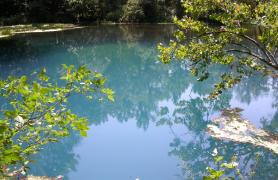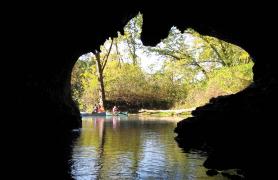
Missouri has more than 110,000 miles of running water, which are the product of the land surrounding them. Their watersheds consist of uplands, floodplains, stream corridors, stream channels, and groundwater. Missouri biologists specializing in aquatic animals (aquatic fauna) have divided the state into four Aquatic Faunal Regions to describe where fish, crayfish, and other aquatic animals live.
Ozark Streams
In Missouri, the Ozark highlands occur mostly south of the Missouri River. To the east, they end where the Bootheel lowlands begin, and to the west, they transform gradually into the Prairie Faunal Region, showing a blend of characteristics along a line drawn roughly from Morgan through Jasper counties.
The streams in the Ozark region typically have steeper gradients than those in the north, and have coarse, rocky substrates.
Geologically, the Ozarks are an elevated plain of ancient bedrock, through which streams have carved deep channels, creating a complex system of rugged hills, rock outcrops and bluffs, and thin, stony soils. Much of the land is forested, and the primary agricultural use is pasture.
The limestone and dolomite karst geology in the Ozarks is famous for its caves and springs, and these influence the character of Ozark streams. Ozark streams typically occupy narrow, steep-sided valleys and often amount to a series of short pools connected by well-defined riffles. Ozark streams usually have coarse, rocky substrates and steeper gradients than those in our prairie regions. Chert gravel is often at the bottom of the stream bed. Ozark streams are typically clear and relatively cool, often because they are fed by springs.
The aquatic animals that live in these clear, cool, high-gradient, fast-flowing, chert-bottomed streams are particularly diverse, because the many separate stream systems are generally isolated from each other. Thus a fish, crayfish, or other aquatic species that lives in one stream may not occur at all in a separate stream only a few miles away — as the crow flies — because they cannot travel overland to reach that different stream system.
In addition to its famous streams and springs, the Ozark Aquatic Faunal Region also contains some large reservoirs created when certain rivers were dammed. The Lake of the Ozarks and Table Rock Lake are examples. These large lakes have their own habitat conditions quite different from Ozark streams, and their dams prevent aquatic animals from moving past them, particularly upstream.
Examples
The following major rivers and their systems of tributary streams are prime examples of the Ozark Aquatic Faunal Region.
- The Osage and Gasconade rivers (which flow into the Missouri River)
- The Meramec and St. Francis rivers (and others that flow into the Mississippi)
- The James and North Fork rivers (which flow into the White River)
- The Black River system (including the Eleven Point and Current rivers)
- The Elk and Spring rivers (which flow into the Neosho River).
Typical Plants And Animals
The rather fast-flowing, clear, cool waters of Ozark streams, their substrates, and their water chemistry are home to many plants and animals not usually found elsewhere in the state. For example, of the two large groups of aquatic snails, it is the gilled snails (prosobranch snails) that predominate in Ozark streams, mostly because the fast-flowing, cool waters of Ozark streams hold more oxygen, making them better suited for snails that must extract oxygen from the water through gills.
Another example are the darters, a group of small fishes that are well represented and especially diverse in Ozark streams. Darters are adapted for life in swift-flowing sections of clear, rocky streams. To keep them from being swept downstream, the gas-filled swim bladder found in most fishes is absent or much reduced in darters, so when they are not swimming, they tend to sink to the bottom. They use their enlarged pectoral fins to hold them in place against rocks. Sculpins, another group of fish mainly present in Ozark streams, use their enlarged pectoral fins in much the same way.
Darters and many minnows in Ozark streams are often brilliantly colored, especially during breeding time. The colors function for mate attraction and assist in territorial displays. The clarity of Ozark streams permits such colors to be visible to other fish; murky water would preclude their usefulness.
Plants that predominate in Ozark streams are ones that are suited for high oxygen content, cool temperatures, relatively little silt, and fast flows. A typical example is watercress.
Ozark streams are found mostly south of the Missouri River.


Key species


